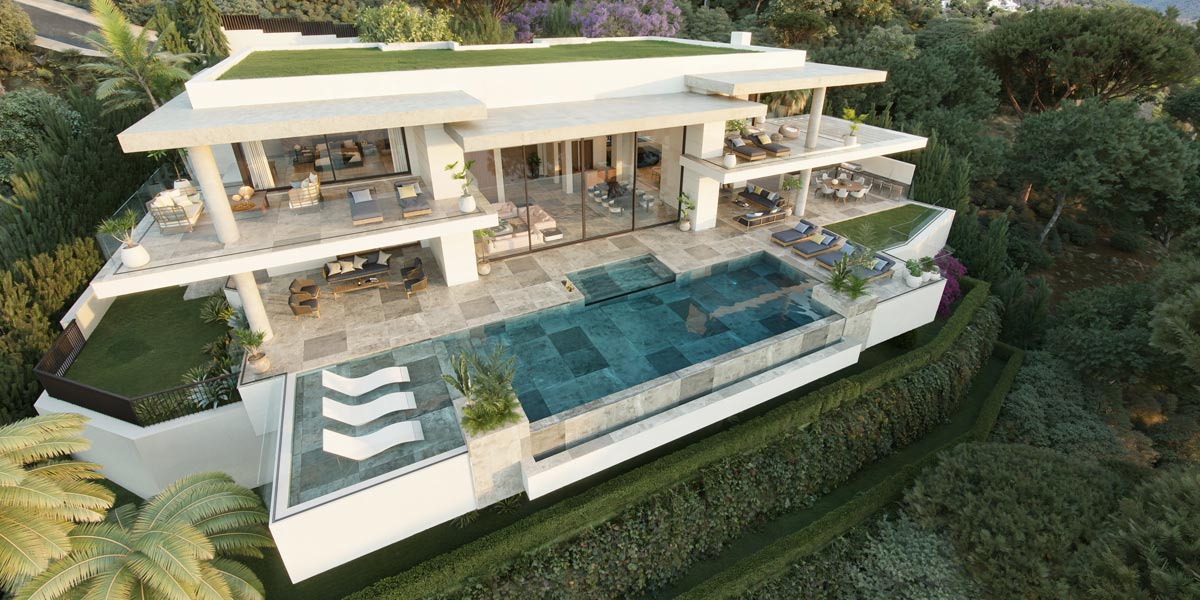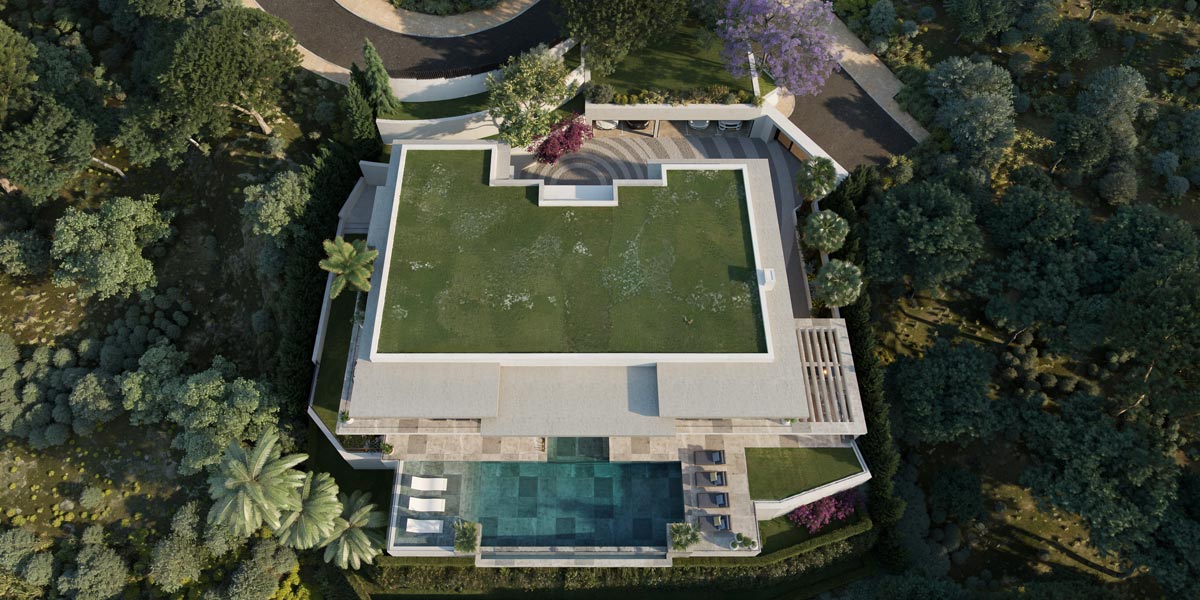Gonzalez & Jacobson Architecture is at the forefront of innovation, the implementation of resources for sustainability, and architecture with minimal environmental impact.
El Madroñal in Benahavis, Malaga, is an example of sustainable construction on the Costa del Sol.
Bioclimatic architecture has gone from being a trend to becoming a necessity. In warm climates like southern Spain, where sun exposure, ventilation, and thermal control are key factors, this architectural approach offers solutions that combine sustainability, comfort, and design.
The González & Jacobson architectural studio in Marbella has incorporated the principles of bioclimatic architecture into numerous design phases, from single-family homes to residential developments. The main objective is clear: to reduce the building’s energy consumption and increase user comfort by taking advantage of the natural conditions of the environment.
A recent example of this approach is the villa that Gonzalez & Jacobson architects are designing in El Madroñal, a prime residential area on the Costa del Sol. This home incorporates various bioclimatic strategies: a green roof was designed to improve thermal insulation, overhangs and sunshades were incorporated to control direct radiation, and finishing materials were used that reflect light and do not absorb heat, helping to keep the interior cool during the warmer months.

Key Strategies of Bioclimatic Design
- Orientation and Sunshade
Proper orientation of the building maximizes natural light without generating excessive heat load. In El Madroñal, strategic overhangs were placed on the most exposed facades to protect the interior from direct sunlight without losing light.
- Cross Ventilation
The layout of the home allows for natural air circulation between rooms, promoting cross ventilation. This helps to passively cool the interior, without relying exclusively on mechanical systems.
- Use of reflective and inertial materials
The use of exterior finishes with high thermal reflectance, along with elements such as natural stone or low-absorption ceramic cladding, significantly improves the building’s thermal performance.

- Green roof and natural insulation
A green roof not only provides aesthetic value but also improves thermal insulation, protects the building from direct solar radiation, and acts as a natural thermal regulator.
Bioclimatic architecture is not at odds with contemporary design. On the contrary, it proposes a more sensitive, intelligent, and coherent architecture with its surroundings, one that responds to natural conditions rather than fighting against them.
In places like the Costa del Sol and Málaga, this approach takes on particular importance. Climate is an advantage if you know how to use it to your advantage. And with today’s tools, we can design buildings that are not only beautiful, but also responsible and long-lasting.




